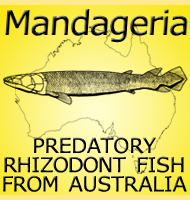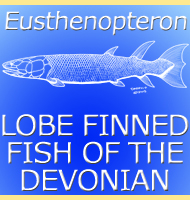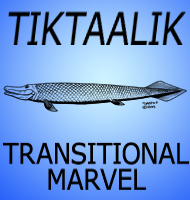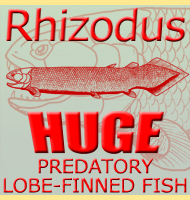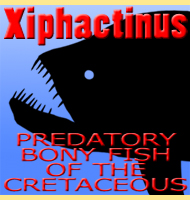


Gogonasus
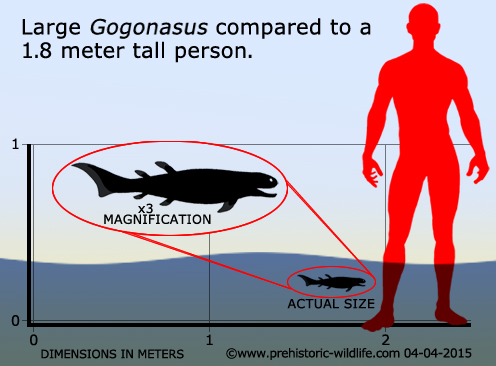
Name: Gogonasus
(Gogo snout).
Phonetic: Go-go-na-sus.
Named By: John A. Long - 1985.
Classification: Chordata, Sarcopterygii,
Tetrapodomorpha, Osteolepidida.
Species: G. andrewsae
(type).
Diet: Carnivore/Piscivore.
Size: Around 30-40 centimetres long.
Known locations: Australia - Gogo Formation.
Time period: Frasnian of the Devonian.
Fossil representation: Several individuals, the
best preserved being almost complete and uncrushed.
Gogonasus was first named in 1985 from a single preserved snout, but since this time better and better specimens have been recovered, with several skulls, and a complete three dimensionally preserved individual discovered in 2005 (another example of how the Gogo Formation of Australia is yielding exquisitely well preserved fossils). Gogonasus is thought to be a relative of Osteolepis, though beyond this, Gogonasus is also thought to be a good example of the early fish that began to develop anatomical features that would one day enable fish to walk out of the water for life on land (to clarify this is not intended to say that Gogonasus was ‘the’ missing link, merely that it was of another transitional form present in a wider evolutionary trend).
Further reading
- A new osteolepidid fish from the Upper Devonian Gogo Formation of
Western Australia. - Records of the Western Australian Museum
12, 361–377. - John A. Long - 1985.
- Osteology and functional morphology of the osteolepiform fish
Gogonasus Long, 1985, from the Upper Devonian
Gogo Formation,
Western Australia. - Records of the Western Australian Museum
Supplement 57, 1–89. - J. A. Long, R. E. Barwick,
K. S. W. Campbelkl - 1997.
- An exceptional Devonian fish from Australia sheds light on tetrapod
origins. - Nature 444, 199-202. - John A. Long, Gavin
C. Young, Tim Holland, Tim J. Senden & Erich M. G.
Fitzgerald - 2006.
----------------------------------------------------------------------------
Random favourites
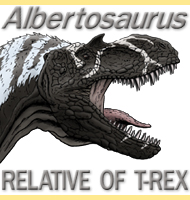 |
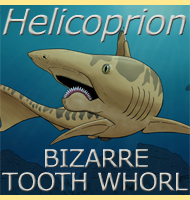 |
 |
 |
